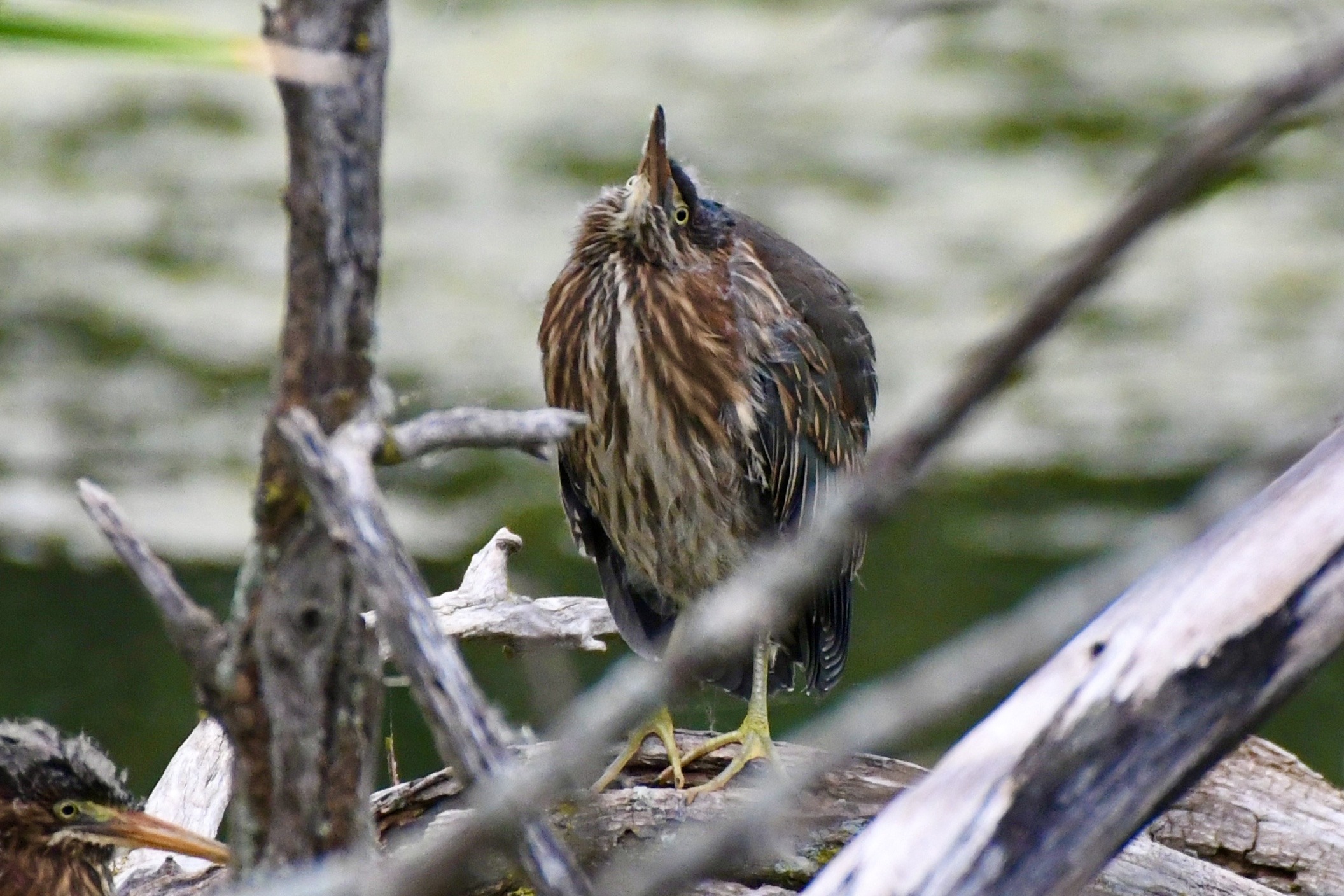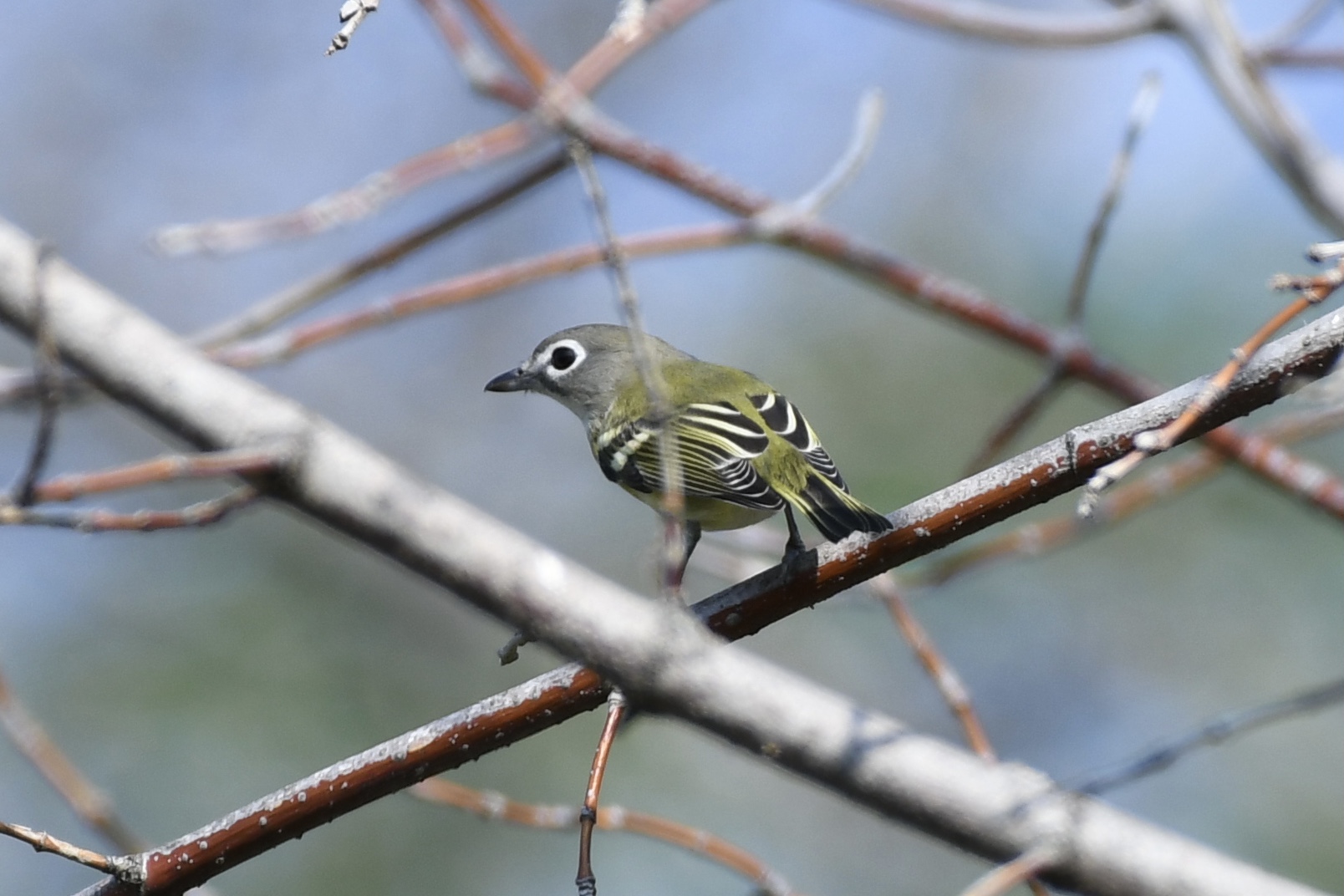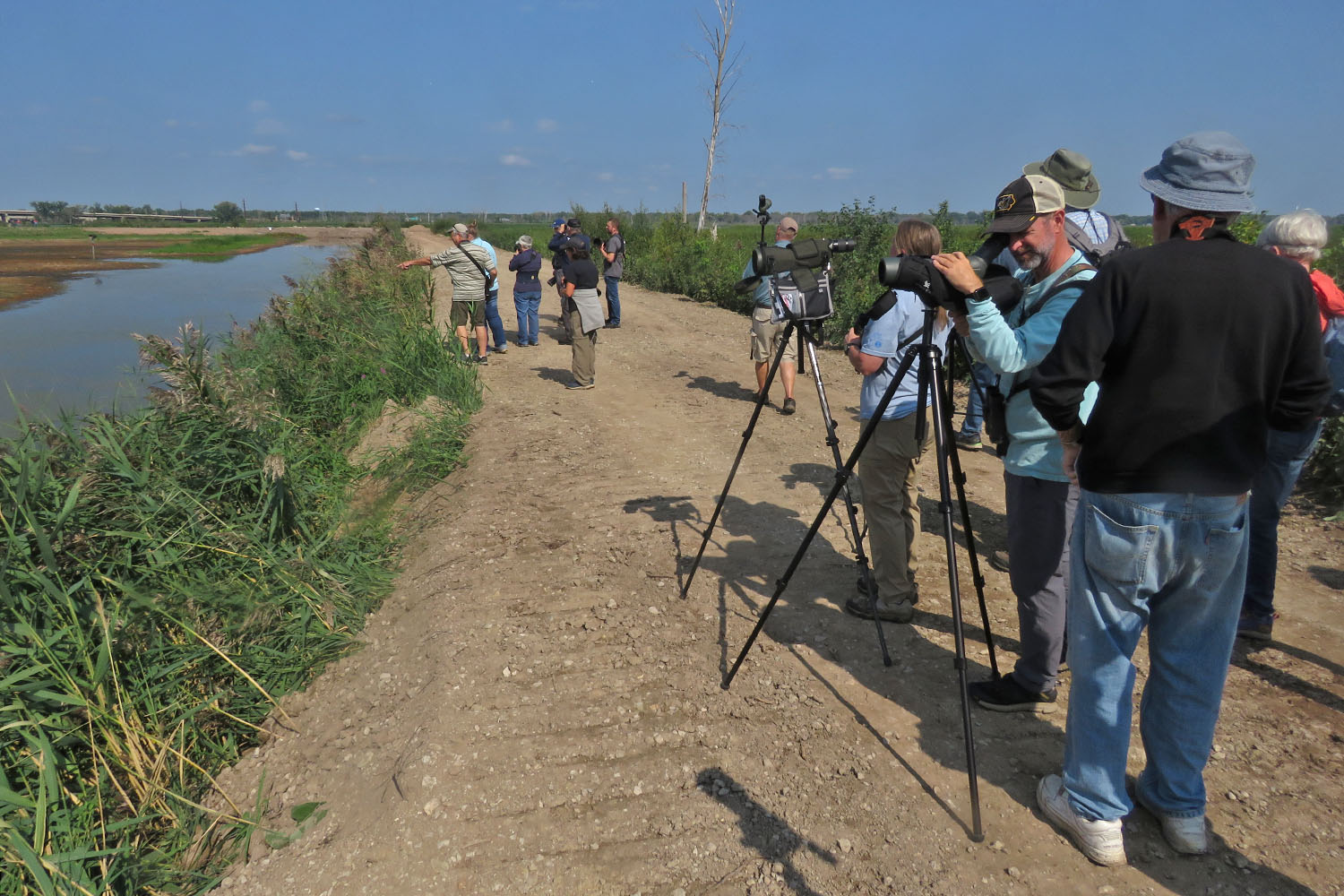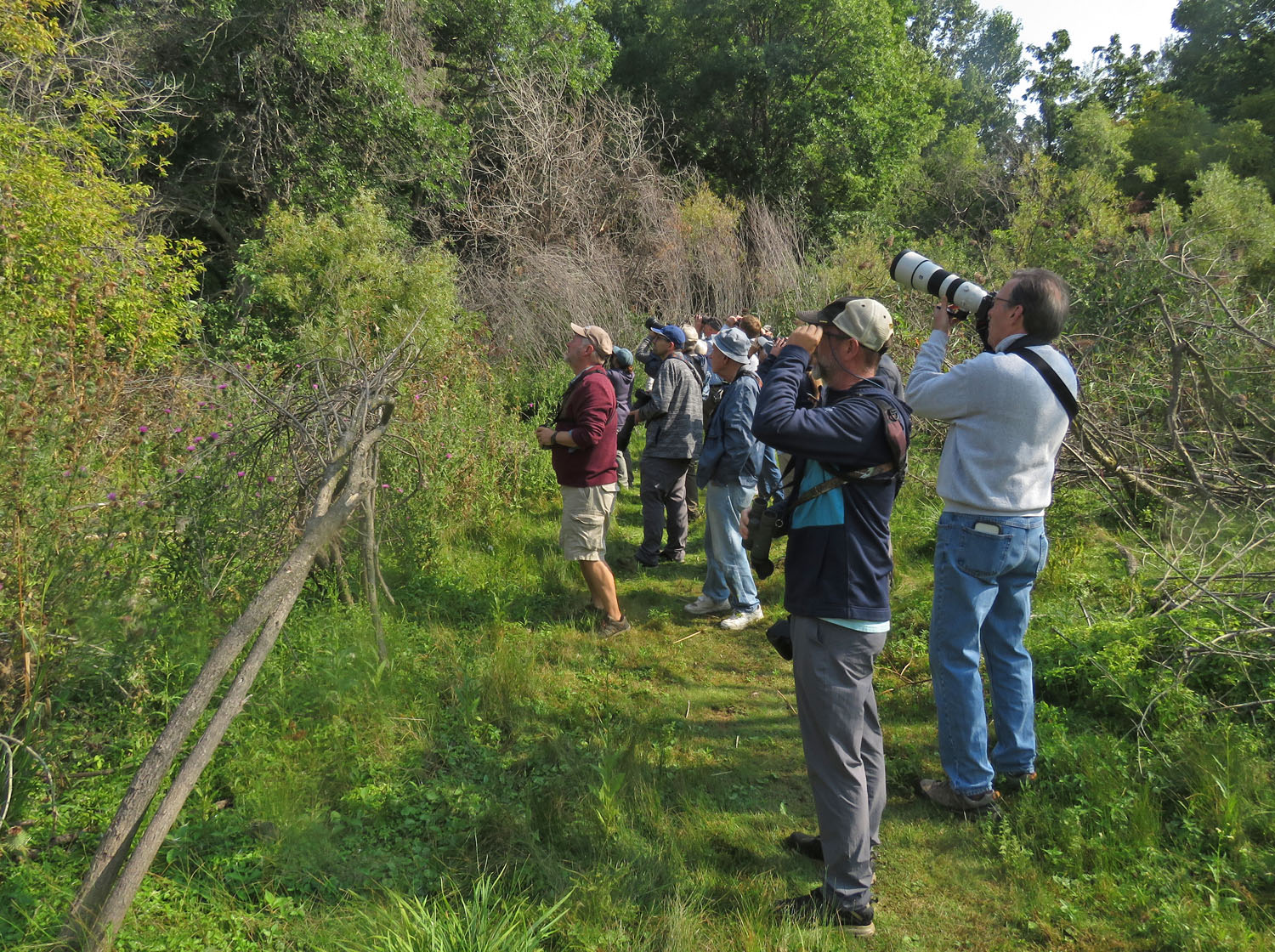Although a little cool (48 degrees), the weather in Green Bay was sunny and calm as our field trip attendees arrived at Bay Beach Wildlife Sanctuary on September 9th. We gathered near one of the lagoons, took attendance, and began checking out the bird activity. Present were MALLARDS, WOOD DUCKS, and CANADA GEESE, as well as GREEN HERON, SPOTTED SANDPIPER, and LESSER YELLOWLEGS. A GREAT EGRET and a BLACK-CROWNED NIGHT-HERON flew past, and NORTHERN FLICKERS and CEDAR WAXWINGS were spotted in the trees.

GREEN HERON - PHOTO BY MATT KLEMME
A few WARBLERS were spotted high in the treetops, as well as a “TRAILL’S” (Willow or Alder) FLYCATCHER. A couple of BLACK-CAPPED CHICKADEES were also present, with one of them appearing entirely white -- apparently albino or leucistic!
Our group hiked around on various trails, eventually finding a nice mixture of migrants including EASTERN WOOD-PEWEE, LEAST FLYCATCHER and EASTERN PHOEBE. RED-EYED VIREOS many have been the bird of the day, along with NORTHERN FLICKERS – with of both species being spotted everywhere we went. Other vireos present were YELLOW-THROATED, BLUE-HEADED, WARBLING and PHILADELPHIA.

BLUE-HEADED VIREO - PHOTO BY MATT KLEMME
We ended up with 17 species of warblers at Bay Beach, with 70 species total. The numbers of individuals there weren’t as spectacular as we have had other years, but we did find a nice variety. The most exciting find there was probably a female BLACK-THROATED BLUE WARBLER, but we also found GOLDEN-WINGED, CAPE MAY, NORTHERN PARULA, MAGNOLIA, BAY-BREASTED, BLACKBURNIAN, BLACKPOLL, and BLACK-THROATED GREEN, among other warblers.

KEN EUERS NATURE AREA - PHOTO BY TOM SCHULTZ
From there we decided to head over to Ken Euers Nature Area, where we walked out onto the dike. This site is in transition, with most of the trees that were formerly present having been cut down, and they are re-working the dikes and impoundment. The water level on the mudflats was quite low, so the shorebird habitat was minimal, but we did find some sandpipers present – including KILLDEER, SEMIPALMATED PLOVER, BAIRD’S, LEAST and PECTORAL SANDPIPERS, and a few WILSON’S SNIPE.
Also present were PIED-BILLED GREBE, GREAT BLUE and GREEN HERONS, GREAT EGRET and RING-BILLED GULLS, but the highlight there was observing about 18 AMERICAN PIPITS as they walked about on the dried grasses of the mudflat. The cattail marsh to the north had several calling SORAS, MARSH WRENS, and SONG and SWAMP SPARROWS. Out on the nearby waters of the bay there were a few AMERICAN WHITE PELICANS, DOUBLE-CRESTED CORMORANTS and RING-BILLED GULLS flying around.
We concluded the field trip a little before noon, with total of 82 species recorded for the morning. It was a fun field trip and we thank everyone who participated, and also Jeff Baughman for co-leading.
Tom Schultz, WSO Field Trips


